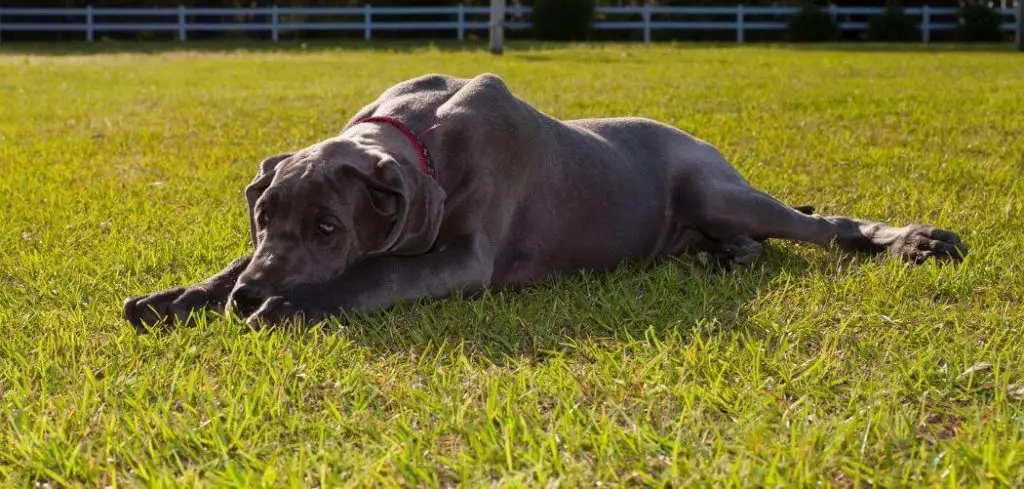When your dog refuses food and passes stool that looks like jelly with blood, it can be incredibly alarming. These two symptoms combined often point to a serious underlying issue needing prompt attention.
We outline the common causes of dog poop looking like jelly with blood and not eating, what you can do at home, and when to seek veterinary help.
Dog Poop Like Jelly With Blood and Not Eating — Why It Happens
Dogs that are not eating and passing bloody, jelly-like stools often suffer from gastrointestinal inflammation or infection. Other causes may include parasites, dietary indiscretion, hemorrhagic gastroenteritis, or more chronic conditions like colitis or even cancer.
When your dog stops eating, it often reflects nausea, abdominal pain, or systemic illness, all of which may coincide with abnormal stool changes.
Quick identification of the cause is key to preventing worsening symptoms or complications like dehydration or sepsis.

Common Causes of Dog Poop Like Jelly With Blood and Not Eating
Hemorrhagic Gastroenteritis (HGE)
HGE is a sudden-onset condition that causes severe bloody diarrhea, often described as having a jelly or raspberry jam appearance.
It typically appears in otherwise healthy dogs who rapidly develop vomiting, lethargy, and a refusal to eat.
The cause isn’t always clear but may involve bacterial overgrowth or stress.
HGE is dangerous because it can lead to dehydration and shock quickly if left untreated.
Colitis
Colitis refers to inflammation of the colon and is a common cause of mucus-laden, bloody stool.
Dogs with colitis may strain to defecate, produce small amounts of stool frequently, and become reluctant to eat due to abdominal discomfort.
Colitis can be acute or chronic and is triggered by dietary changes, infections, or even stress. Dogs may seem low energy or restless and may refuse meals during flare-ups.
Read more: Dog Diarrhea and Not Eating (When to worry)
Parasitic Infections
Worms such as whipworms or protozoa like Giardia can cause inflammation of the intestines, resulting in bloody, mucousy diarrhea. Affected dogs may lose their appetite, vomit, or become generally unwell.
Puppies and dogs that haven’t had regular deworming are especially vulnerable. Heavy infestations can lead to anemia and poor nutrient absorption.
Dietary Indiscretion
If your dog raided the trash or ate something spoiled, they might develop gastroenteritis. This often results in loose stool, sometimes with mucus and blood, accompanied by nausea and a lack of appetite.
In some cases, toxic ingestion can cause serious inflammation or even internal bleeding, worsening the stool presentation.
Inflammatory Bowel Disease (IBD)
Dogs with IBD often experience recurring episodes of vomiting, diarrhea, and poor appetite. The stool may contain mucus and blood due to chronic inflammation in the gut lining.
These dogs may have flare-ups during times of stress or when exposed to certain foods. Over time, IBD can lead to weight loss, nutrient deficiencies, and lethargy.
Gastrointestinal Tumors
Although less common, tumors in the digestive tract can cause blood in the stool, mucus production, and appetite loss. Older dogs are at greater risk.
Owners might notice weight loss, intermittent vomiting, or changes in behavior. Prompt diagnostics like imaging and biopsy are essential for identifying or ruling out cancer.
What to Do If Your Dog Is Pooping Jelly With Blood and Not Eating
First, withhold food for 12–24 hours to rest the gut if your dog is otherwise alert and not vomiting excessively. Offer small amounts of water frequently to prevent dehydration. Avoid giving any over-the-counter medications unless prescribed by a vet.
If your dog seems mildly ill, you can try offering a bland diet of boiled chicken and rice after the fast. Watch closely for any changes in behavior, appetite, or stool.
Keep your dog calm and avoid stressors that may worsen GI symptoms. Also, consider when the last deworming was done—you may want to discuss parasite control with your vet.
Monitoring is key. If symptoms worsen or persist beyond 24 hours, medical evaluation is critical.
When to Call or Visit Your Vet
Call your vet immediately if your dog:
Has jelly-like poop with bright red or dark blood
Refuses all food for more than 24 hours
Is lethargic, weak, or seems in pain
Vomits repeatedly
Shows signs of dehydration (dry gums, sunken eyes, poor skin elasticity)
These signs suggest a potentially serious condition that cannot be managed at home. A vet may recommend stool tests, bloodwork, imaging, or hospitalization for fluids and medication.
Read more: Dog has no energy and not eating (What it means)
Key Takeaway
If your dog is pooping blood and mucus and not eating, don’t ignore it. These signs often point to gastrointestinal inflammation, infection, or even something more serious like HGE or cancer.
Provide supportive care at home only if your dog is stable—but reach out to your veterinarian without delay if symptoms persist or worsen. Early treatment improves outcomes and keeps your dog on the road to recovery.
